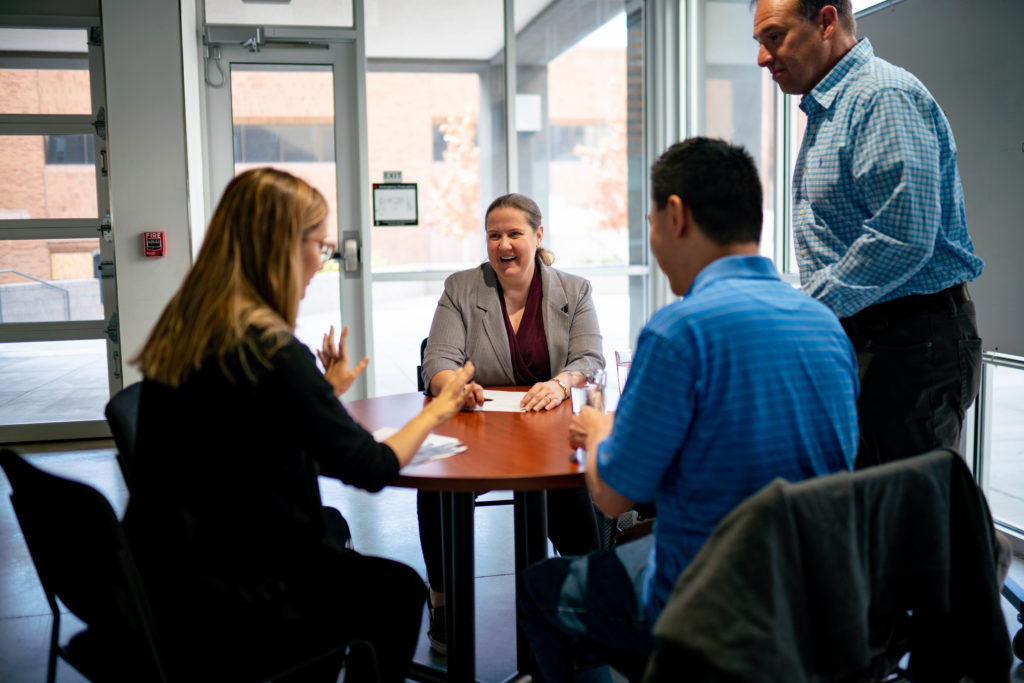By Roxanne Aragon, Hyperspace Challenge Program Director
As the third Hyperspace Challenge cohort advances with its 2020 finalists into the core working phase of the program, it becomes easy to focus solely on what the accelerator delivers to startups: a chance to work one on one with government customers to iterate technologies for the U.S. Space Force, learn how to partner with the government, and establish government relationships that last long after the program ends.
But how it delivers to startups is almost as important as what it delivers, because without that, Hyperspace Challenge couldn’t deliver all of those things as effectively. Learn one key reason why cohort alumni agree Hyperspace Challenge works.
The mission of Hyperspace Challenge is to accelerate partnership between the U.S. government and the startup community, in order to drive space innovation. But this accelerator wasn’t designed by the government for the government.
It was built, first and foremost, with startups in mind.
By definition, startups are emerging – and emerging entities need the right fuel at the right time in order to grow. We believe that focusing first on meeting the needs of startups will result in stronger partnerships, so we can better fulfill our mission to drive innovation in space.
The philosophy of Hyperspace Challenge is underpinned by a core objective: to build a strong community of collaborators.
We believe accelerating people for long-term growth is more valuable than accelerating profits for short-term gain, so our program is designed to help startups forge meaningful relationships with the government and help them establish a substantive network that can take them well beyond the Hyperspace Challenge program itself.
Many cohort alumni will tell you they can trace numerous government contracts they secure after leaving the program directly back to relationships they built while here. This is a fact we’re truly proud of.
The model we use to establish this depth of sustainability is built on three key stages that are intrinsically linked and strategically designed to foster understanding, increase trust, and build respect between the government and commercial communities.
Stage One: Finding a Fit
From the outset, we identify the government customer and pain points so startups will know exactly who they are serving, and why.
At the same time, we recruit only the companies that have the potential to address those pain points, and we give them ample opportunity through our pre-interview discovery process to work with government customers to determine, prior to applying for the accelerator, if there’s a good fit.
By methodically connecting the problem with a potential solution, we significantly increase the chances for productive partnership.
Stage Two: Forging a Connection
The government is notoriously bureaucratic and complex, while startups are notoriously informal and inventive. The cultural and operational differences between these communities are so substantial it can be difficult for them to connect, much less collaborate.
Hyperspace Challenge’s methodology systematically builds trust between the accelerator’s government and startup participants by helping them understand how the other functions, what it needs, and how to communicate. This sets the foundation for a growth mindset that encourages active listening and proactive questioning that lead to strong, sustainable relationships.
Stage Three: Fostering Collaboration
We believe that once trust and understanding have been established, creativity and collaboration ensue.
The Hyperspace Challenge methodology encourages the formation of partnerships that support the iteration of technology to ensure a stronger product-market fit.
Startups work directly with government customers in a research and development capacity to explore how their technology can support the government’s needs, and evolve and customize it as needed.
Hyperspace Challenge was also designed to offer maximum results with a minimal investment in time and resources. We understand that startups have little of either to spare, so the program was designed to require no more than 30 total hours from participants over a three-month period, and when the program is held in-person, startups are awarded a stipend to offset travel costs associated with participation.
Building Hyperspace Challenge with a startups-first focus may sound counterintuitive for a government-initiated program. But to us it makes perfect sense.
In order for the U.S. Space Force to advance as quickly and effectively as possible, it needs to be able to marry commercial sector innovation with the innovation occurring in its own labs.
The power of these combined communities poses the most exciting prospect to us: how far and how fast can we advance into space…together?

